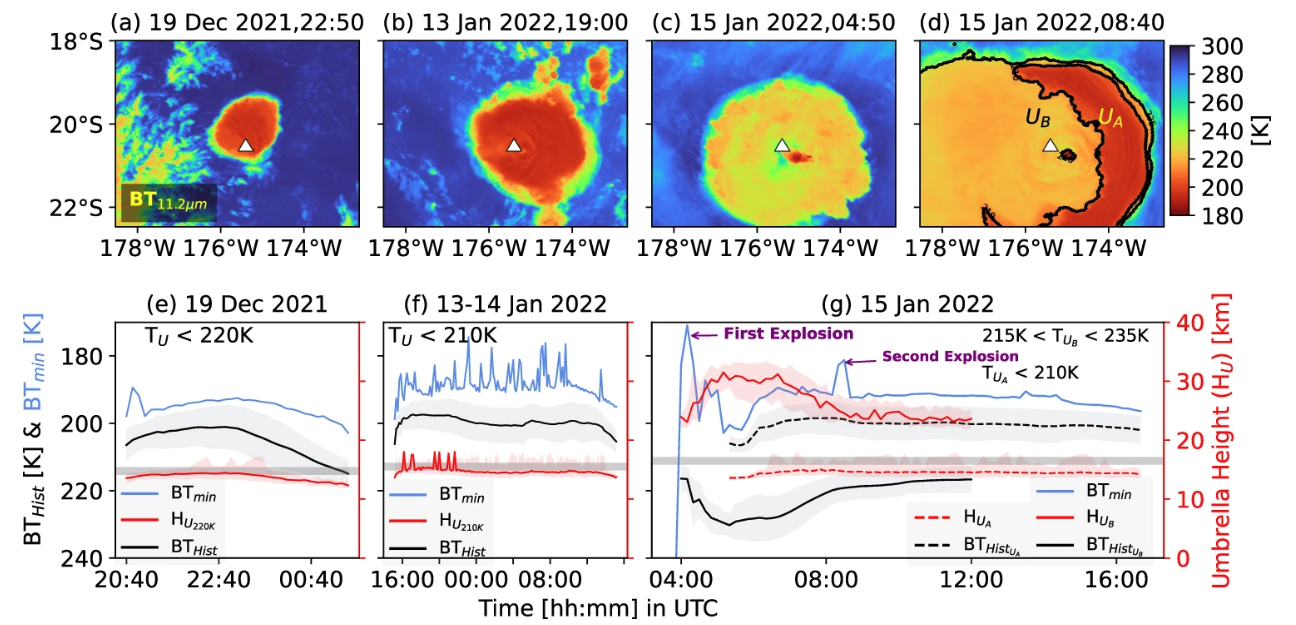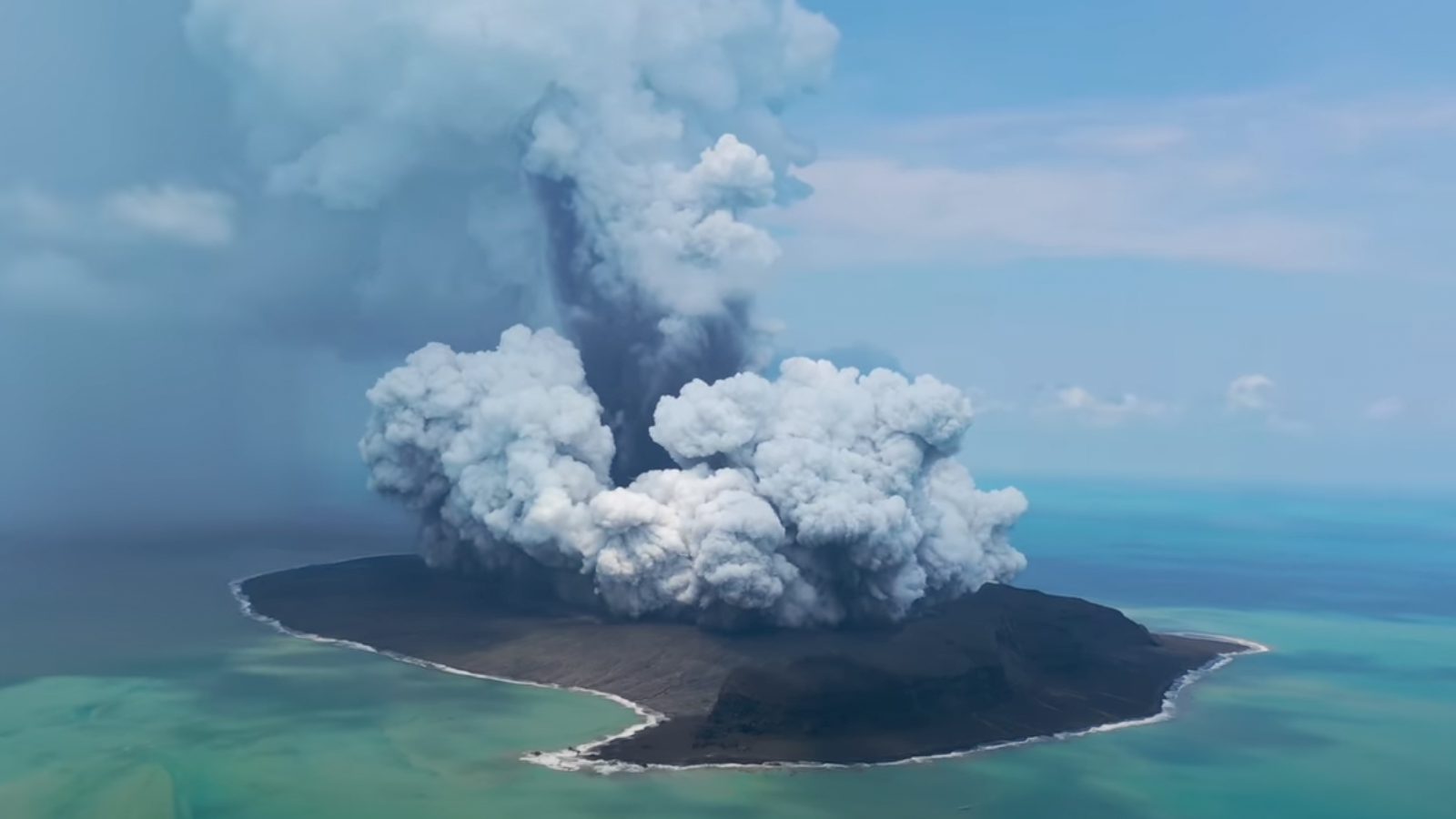THE IDEA
Vanderbilt Earth scientists studying submarine volcanism used satellite imagery to assess the most energetic volcanic eruption in at least 20 years: The Hunga Tonga-Hunga Ha‘apai volcano erupted three times over December 2021 and January 2022.
New technology, and this eruption with once-in-a-generation explosivity, gave researchers led by former Vanderbilt postdoctoral researcher Ashok Kumar Gupta new insights into volcanic behavior—and the first opportunity to create a complete timeline of the eruption and the large umbrella clouds it produced.
Working with available data from the Japanese Meteorological Agency, the scientists determined the volcano’s two extensive umbrella clouds’ heights, water contents, longevities and volumetric flow rates. “Before the Hunga Tonga eruption, we hadn’t directly witnessed a volcanic eruption like this one. The size of the plume and umbrella cloud surprised us and is challenging our understanding of the physics of volcanic eruptions,” said Kristen Fauria, assistant professor of Earth and environmental sciences. “This big eruption also took place underwater and shows that we can’t neglect the hazards and impacts of volcanoes in the ocean.”
WHY IT MATTERS
This work is the foundation that Earth scientists use to understand volcanic eruption characteristics, underlying causes and mechanisms, and their impact on climate.
“Our observations showed that the umbrella clouds formed during the entire eruption chronology of December 2021 and January 2022 were ice-rich,” said Gupta, now assistant project scientist in the Department of Atmospheric and Oceanic Sciences at UCLA. “From an atmospheric science point of view, we are further investigating the influence of the excess amount of water vapor injected into the stratosphere on the stratospheric chemistry, stratospheric temperature and the Earth’s surface temperature.”
“We’ve created a foundational data set that other observations can be compared against,” said Ralf Bennartz, Stevenson Professor of Earth and environmental sciences. “This event was observed by a number of novel weather satellites operated by the National Oceanic and Atmospheric Administration and the Japanese Meteorological Agency. We’re creating processed data that will help scientists build models and test ideas. No one has ever had the opportunity to observe an event like this that spans levels of the atmosphere within one volcanic eruption.”

WHAT’S NEXT
One unique aspect of this submarine volcanic eruption is that because it was so energetic, the water-rich plumes from the eruption reached the mesosphere at a height of 57 kilometers, Fauria said. This is the first volcanic eruption observed to reach such an altitude. Most explosive eruptions do not exceed the tropopause, or heights of about 15 kilometers. Fauria, Gupta, Bennartz and other Vanderbilt researchers are investigating the climatic impacts of the water-rich clouds reaching this height.
“We are seeing that water reached the higher parts of the atmosphere where water typically doesn’t go. Ongoing work is showing that the new water in the atmosphere from the eruption might affect climate for the next several years,” Fauria said.
Even though water vapor won’t last in the atmosphere forever, water can impact Earth’s climate like other greenhouse gases. The Hunga Tonga eruption provides a natural experiment to understand the impacts of this excess water vapor and how our atmosphere and climate respond to sudden perturbations.
FUNDING
This work was funded by NASA grant 80NSSC20K1450. The study used data from the Data Integration and Analysis System by Japan Agency for Marine-Earth Science and Technology and the European Climate Data Store.
GO DEEPER
The article, “Eruption chronology of the December 2021 to January 2022 Hunga Tonga-Hunga Ha‘apai eruption sequence” was published in the journal Nature Communications Earth and Environment on Dec. 13.



